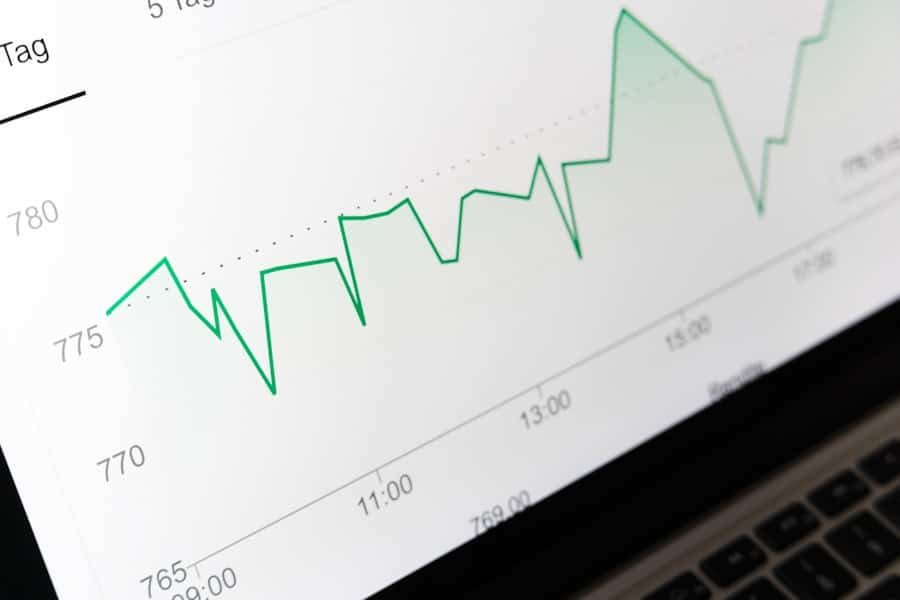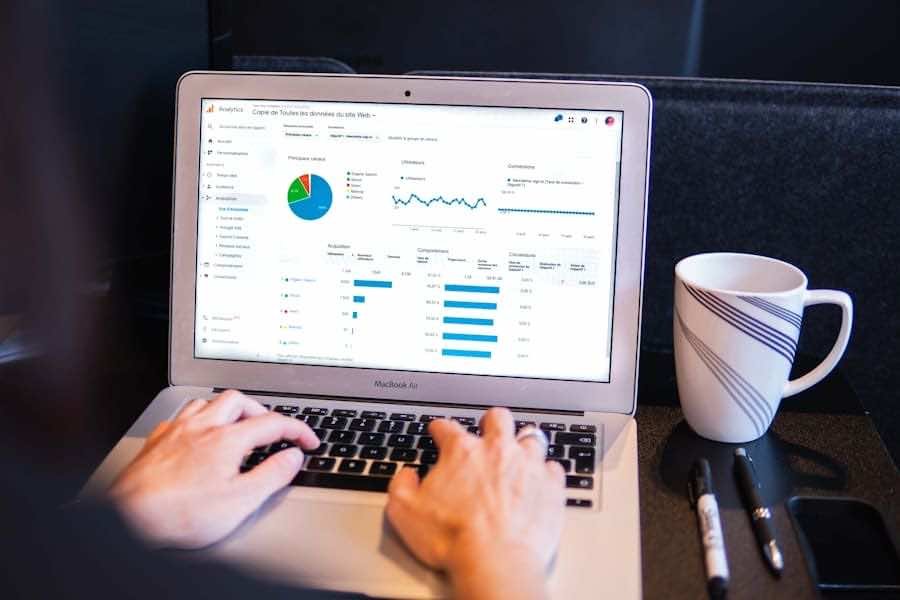In an era characterised by rapid technological advancements and an ever-increasing volume of data, businesses are compelled to adopt sophisticated methodologies to remain competitive. Advanced forecasting analytics represents a pivotal evolution in the realm of predictive analytics, leveraging complex algorithms, machine learning, and big data to generate insights that were previously unattainable. This approach transcends traditional forecasting methods, which often relied on historical data and simplistic statistical models.
Instead, advanced forecasting analytics integrates diverse data sources, including real-time information, social media trends, and economic indicators, to create a more nuanced understanding of future events. The significance of advanced forecasting analytics lies in its ability to provide organisations with a strategic advantage. By harnessing the power of predictive modelling and data mining techniques, businesses can anticipate market trends, consumer behaviour, and operational challenges with remarkable accuracy.
This not only aids in decision-making but also enhances the overall agility of an organisation. As industries continue to evolve and consumer expectations shift, the need for precise forecasting becomes increasingly critical. Thus, understanding the intricacies of advanced forecasting analytics is essential for any organisation aiming to thrive in today’s dynamic business landscape.
Summary
- Advanced Forecasting Analytics involves using sophisticated techniques and tools to predict future trends and outcomes based on historical data and other relevant factors.
- Implementing Advanced Forecasting Analytics can help businesses make more informed decisions, improve operational efficiency, and gain a competitive edge in the market.
- Key components of Advanced Forecasting Analytics include data collection, statistical analysis, machine learning algorithms, and predictive modelling.
- Benefits of implementing Advanced Forecasting Analytics include improved accuracy in decision-making, better resource allocation, and enhanced risk management.
- Challenges and limitations of Advanced Forecasting Analytics may include data quality issues, complex algorithms, and the need for skilled analysts to interpret results accurately.
The Importance of Advanced Forecasting Analytics in Business
Optimising Operations
For instance, retailers can utilise advanced forecasting techniques to predict seasonal demand fluctuations, allowing them to manage inventory levels more effectively and reduce the risk of stockouts or overstock situations. This not only improves operational efficiency but also contributes to a better customer experience, as products are more likely to be available when consumers want them.
Financial Planning and Risk Management
Moreover, advanced forecasting analytics plays a crucial role in financial planning and risk management. By employing sophisticated models that account for various economic indicators and market dynamics, businesses can make informed decisions regarding investments, budgeting, and resource allocation. For example, financial institutions can leverage these analytics to assess credit risk more accurately, enabling them to make better lending decisions.
Cornerstone for Strategic Planning
In this way, advanced forecasting analytics serves as a cornerstone for strategic planning across various sectors, ensuring that organisations can navigate uncertainties with confidence.
Key Components of Advanced Forecasting Analytics

Advanced forecasting analytics comprises several key components that work synergistically to produce accurate predictions. One of the most critical elements is data integration. This involves aggregating data from multiple sources—such as sales records, customer feedback, social media interactions, and economic reports—to create a comprehensive dataset that reflects the multifaceted nature of the market.
The quality and breadth of data directly influence the accuracy of forecasts; therefore, organisations must invest in robust data collection and management systems. Another essential component is the application of machine learning algorithms. These algorithms enable systems to learn from historical data patterns and improve their predictive capabilities over time.
Techniques such as regression analysis, time series analysis, and neural networks are commonly employed to identify trends and correlations within the data. Additionally, advanced forecasting analytics often incorporates scenario analysis and simulation techniques, allowing businesses to explore various potential futures based on different assumptions and variables. This multifaceted approach ensures that organisations are not only prepared for expected outcomes but also equipped to handle unexpected changes in the market landscape.
Benefits of Implementing Advanced Forecasting Analytics
Implementing advanced forecasting analytics offers a multitude of benefits that can significantly enhance an organisation’s operational efficiency and strategic decision-making capabilities. One of the primary advantages is improved accuracy in predictions. Traditional forecasting methods often rely on linear models that may not capture the complexities of modern markets.
In contrast, advanced analytics utilises sophisticated algorithms that can process vast amounts of data and identify intricate patterns, leading to more reliable forecasts. This increased accuracy translates into better resource allocation, reduced waste, and enhanced profitability. Furthermore, advanced forecasting analytics fosters a culture of data-driven decision-making within organisations.
By providing stakeholders with actionable insights derived from comprehensive analyses, businesses can move away from intuition-based strategies towards evidence-based approaches. This shift not only enhances accountability but also encourages collaboration across departments as teams work together to interpret data and implement strategies based on shared insights. As a result, organisations become more agile and responsive to market changes, positioning themselves for long-term success.
Challenges and Limitations of Advanced Forecasting Analytics
Despite its numerous advantages, the implementation of advanced forecasting analytics is not without challenges and limitations. One significant hurdle is the complexity of data management. As organisations strive to integrate diverse datasets from various sources, they often encounter issues related to data quality, consistency, and accessibility.
Inaccurate or incomplete data can lead to flawed predictions, undermining the very purpose of advanced analytics. Therefore, businesses must invest in robust data governance frameworks to ensure that their datasets are reliable and up-to-date. Another challenge lies in the need for skilled personnel who can effectively interpret and utilise advanced forecasting models.
The field of data science is rapidly evolving, and organisations may struggle to find professionals with the requisite expertise in machine learning and statistical analysis. Additionally, there may be resistance to adopting new technologies or methodologies within established organisational cultures. Overcoming these barriers requires a commitment to continuous training and development as well as fostering an environment that embraces innovation and change.
Best Practices for Utilising Advanced Forecasting Analytics

To maximise the benefits of advanced forecasting analytics, organisations should adhere to several best practices that enhance their analytical capabilities. First and foremost is the establishment of clear objectives for forecasting initiatives. By defining specific goals—such as improving inventory management or enhancing customer engagement—organisations can tailor their analytical efforts to meet these targets effectively.
Another best practice involves investing in the right technology infrastructure. This includes selecting appropriate software tools that facilitate data integration, analysis, and visualisation. Cloud-based solutions have gained popularity due to their scalability and accessibility, allowing organisations to leverage powerful computing resources without significant upfront investments.
Furthermore, fostering collaboration between data scientists and domain experts is crucial; this interdisciplinary approach ensures that forecasts are not only statistically sound but also contextually relevant.
Case Studies of Successful Implementation of Advanced Forecasting Analytics
Numerous organisations have successfully implemented advanced forecasting analytics to drive significant improvements in their operations. One notable example is Amazon, which utilises sophisticated algorithms to predict customer purchasing behaviour based on historical data and real-time trends. By analysing vast amounts of information—from browsing history to seasonal shopping patterns—Amazon can optimise its inventory management and personalise marketing strategies effectively.
This level of precision has contributed to Amazon’s dominance in the e-commerce sector. Another compelling case is that of Coca-Cola, which employs advanced forecasting analytics to manage its supply chain efficiently. By integrating data from various sources—including sales forecasts, weather patterns, and promotional activities—Coca-Cola can anticipate demand fluctuations across different regions.
This proactive approach enables the company to optimise production schedules and distribution routes, ultimately reducing costs while ensuring product availability during peak demand periods.
Future Trends in Advanced Forecasting Analytics
As technology continues to evolve at an unprecedented pace, several trends are emerging within the realm of advanced forecasting analytics that will shape its future landscape. One prominent trend is the increasing integration of artificial intelligence (AI) into forecasting models. AI-driven algorithms are becoming more sophisticated, enabling organisations to process larger datasets with greater speed and accuracy than ever before.
This shift will likely lead to even more precise predictions and enhanced decision-making capabilities across various industries. Additionally, the rise of real-time analytics is set to transform how businesses approach forecasting. With advancements in IoT (Internet of Things) technology and data streaming capabilities, organisations will be able to access real-time information about market conditions and consumer behaviour instantaneously.
This immediacy will empower businesses to adapt their strategies on-the-fly rather than relying solely on historical data trends. Moreover, ethical considerations surrounding data privacy will play an increasingly important role in shaping advanced forecasting practices. As consumers become more aware of how their data is used, organisations will need to prioritise transparency and ethical data usage in their forecasting efforts.
This focus on ethical considerations will not only build trust with consumers but also ensure compliance with evolving regulations surrounding data protection. In conclusion, advanced forecasting analytics stands at the forefront of modern business strategy, offering unparalleled insights that drive efficiency and competitiveness in an ever-changing landscape. As organisations continue to navigate complexities in their respective markets, embracing these advanced methodologies will be crucial for sustained success.
If you are interested in learning more about alternative marketing methods that can help a new business, you should check out this article. It provides valuable insights into creative strategies that can give your business a competitive edge in the market. Advanced Forecasting Analytics can also play a crucial role in guiding your marketing decisions, as discussed in the original article. Additionally, if you are looking to relocate your business, you may find the article on how to find the right interstate movers in Sydney helpful.
FAQs
What is Advanced Forecasting Analytics?
Advanced Forecasting Analytics is a method of using statistical algorithms and machine learning techniques to analyze historical data and make predictions about future events or trends. It involves the use of advanced mathematical models to forecast outcomes with a high degree of accuracy.
How is Advanced Forecasting Analytics different from traditional forecasting methods?
Advanced Forecasting Analytics differs from traditional forecasting methods in that it leverages advanced statistical techniques and machine learning algorithms to analyze large and complex datasets. This allows for more accurate and reliable predictions compared to traditional methods.
What are the benefits of using Advanced Forecasting Analytics?
Some of the benefits of using Advanced Forecasting Analytics include improved accuracy in predicting future outcomes, better understanding of underlying patterns and trends in data, and the ability to make more informed business decisions based on data-driven insights.
What are some common applications of Advanced Forecasting Analytics?
Advanced Forecasting Analytics is commonly used in various industries such as finance, retail, healthcare, and supply chain management. It can be applied to predict sales trends, stock prices, patient outcomes, and demand for products or services, among other things.
What are some popular tools and software used for Advanced Forecasting Analytics?
Some popular tools and software used for Advanced Forecasting Analytics include R, Python, SAS, MATLAB, and Microsoft Excel. These tools provide a range of statistical and machine learning capabilities for analyzing and forecasting data.
